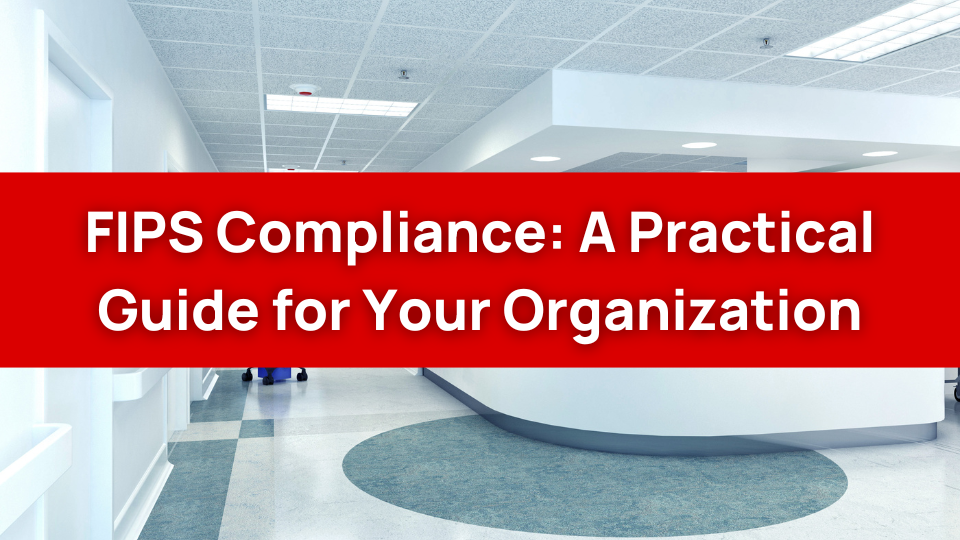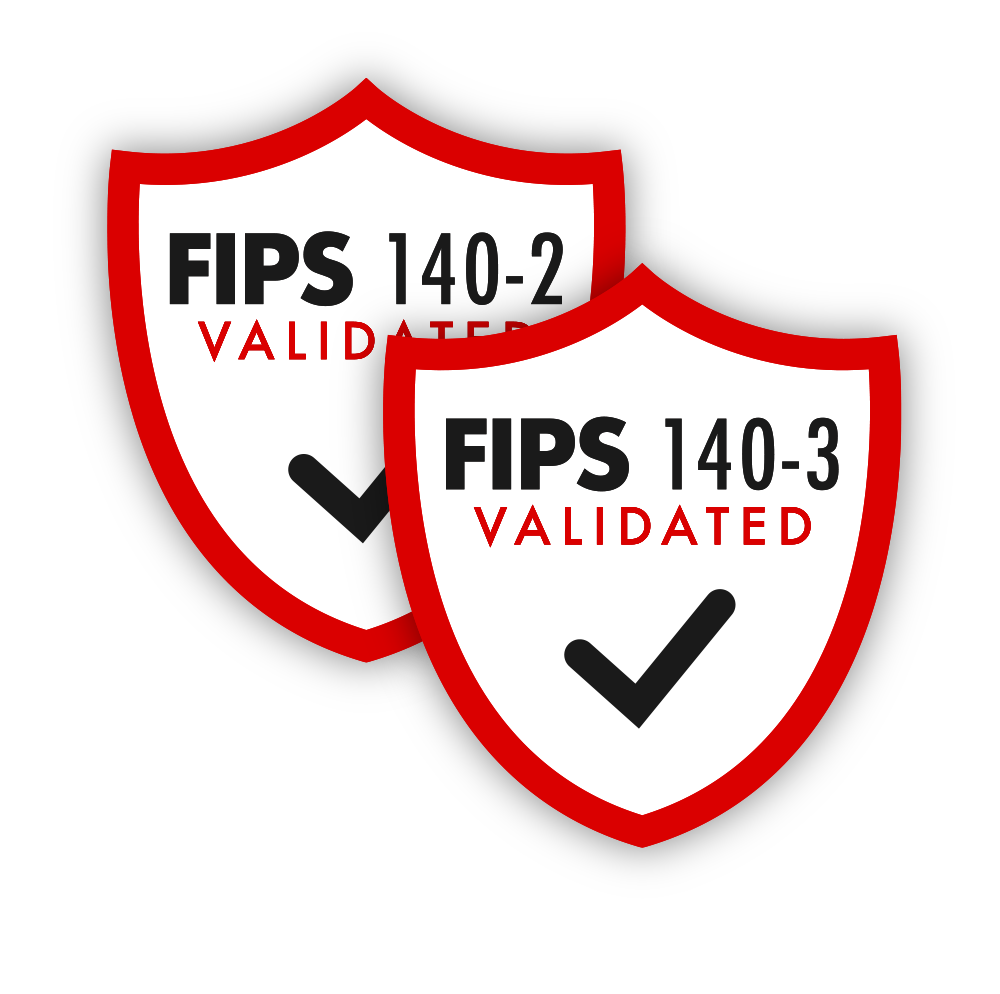Understanding The FIPs Compliance Process
Achieving FIPS 140-2 compliance involves a series of steps guided by NIST and CSE.
The validation process can be time-consuming and financially demanding, often spanning up to a year and costing around $100,000. Despite the investment, this process is crucial for ensuring that cryptographic modules are robust and reliable.
Engaging with NVLAP-accredited laboratories for testing and validation is a critical component of becoming FIPS compliant. Only those accredited laboratories may certify a manufacturer's plan to the FIPS standards.
Approved Cryptographic Algorithms
Organizations must implement encryption solutions that utilize approved algorithms or security functions listed in FIPS 140-2 Annex A. This ensures that cryptographic methods meet the rigorous security requirements necessary for compliance and authorized data access.
Approved security functions defined in FIPS 140-2 Annex A include:
AES and TDEA Symmetric Key Encryption and Decryption
DSA, RSA, and ECDSA Digital Signatures
Secure Hash Standard (HSH)
SHA-3 Standard
Triple-DES, AES, and HMAC Message Authentication
Role-Based vs. Identity-Based Authentication
Authentication mechanisms are essential for preventing unauthorized access to sensitive information. Role-based authentication grants access based on predefined roles, with permissions assigned to these roles. Users gain access indirectly by assuming roles, making it efficient for managing group permissions.
However, identity-based authentication is generally considered more secure, as it allows for unique credentials per user, ensuring higher security levels. While role-based authentication is suitable for environments with multiple users requiring similar access levels, identity authentication provides a personalized approach, enhancing security by assigning unique credentials to each user.
Physical Security Requirements
FIPS 140-2 specifies physical security requirements for cryptographic key management, user authentication, and overall data security. At Security Level 2, tamper-evident coatings or seals are mandatory to detect unauthorized access to cryptographic keys. These features ensure that any attempt to access critical security parameters is evident, thereby protecting sensitive information.
Security Level 2 also mandates the use of pick-resistant locks on removable covers or doors of cryptographic modules. As the security levels increase, the physical security mechanisms become more stringent.
Security Level 3, for example, incorporates mechanisms to detect and respond to unauthorized access attempts, providing enhanced protection. At the highest level, Security Level 4, comprehensive protection against all unauthorized physical access attempts is required.
Self Tests and System Integrity
FIPS 140-2 mandates that cryptographic modules perform known answer tests (KATs) to verify the output of approved cryptographic algorithms. These self-tests are crucial for ensuring the correct functioning of cryptographic methods. Power-on self-tests are executed each time a cryptographic module is powered on, verifying the success of the system before any cryptography is performed.
Conditional self-tests check the integrity of digitally signed software packages and verify the generation of random numbers. For example, if a known answer test fails, the system enters a critical error state, disabling further cryptographic actions and logging the failure. This ensures that any issues are promptly addressed, maintaining the system’s overall reliability.
Common Criteria vs FIPS
Common Criteria and FIPS are distinct but complementary standards in information security. Common Criteria is a set of definitions that focuses on assessing security features in IT products, while FIPS 140 specifically validates cryptography and data security. The NIST Information Technology Laboratory and the National Information Assurance Partnership (NIAP) collaborate to align these standards, reducing duplication between evaluations.
To put it another way: FIPS may be a part of an overall Common Criteria evaluation, but the two are not equivalent. FIPS may be a subset of a broader evaluation.
Protection Profiles (PPs) define cryptographic assurance activities that support both Common Criteria and FIPS validation. The development and approval of FIPS are governed by the Information Technology Management Reform Act of 1996 and the Computer Security Act of 1987. This joint effort ensures that cryptographic standards are robust and applicable across various sectors.
Summary
In summary, FIPS compliance is crucial for ensuring the security of sensitive data. From understanding the importance of FIPS to implementing practical steps to be FIPS compliant, this guide provides a comprehensive overview. By adhering to FIPS 140-2, organizations can enhance their security posture and gain trust among clients and stakeholders.
Achieving FIPS compliance requires a commitment to rigorous standards and continuous improvement. By following the outlined steps and leveraging validated cryptographic modules, organizations can protect their data and maintain high levels of security.
Frequently Asked Questions
What is FIPS compliance?
FIPS compliance involves demonstrating security requirements for cryptographic processes on a device. Manufacturers must follow the guidelines established by NIST to maintain data security, particularly within federal and regulated sectors. This adherence is crucial for safeguarding sensitive information. It's a requirement in many US federal applications, and a best-practice to be observed in other applications and industries as well.
Why is FIPS 140-2 important?
FIPS 140-2 is important because it establishes standards for cryptographic modules, ensuring the confidentiality and authenticity of sensitive data. Compliance with these standards is essential for safeguarding information in various applications. Very sensitive data is best served by validating your solution to be FIPS compliant.
How long does it take to secure FIPS 140-2 validation?
FIPS 140-2 validation can take up to a year and may cost around $100,000, making it a significant investment for ensuring the reliability of cryptographic modules. The easiest way for manufacturers to achieve FIPS compliance is to leverage a partner's FIPS-validated modules, such as those provided by Ezurio.
What is the difference between role-based and identity-based authentication?
The primary difference is that role-based authentication provides access based on predefined roles, whereas identity-based authentication relies on unique user credentials for enhanced security. Therefore, the latter is generally considered more secure.


 Laird Connectivity is now Ezurio
Laird Connectivity is now Ezurio